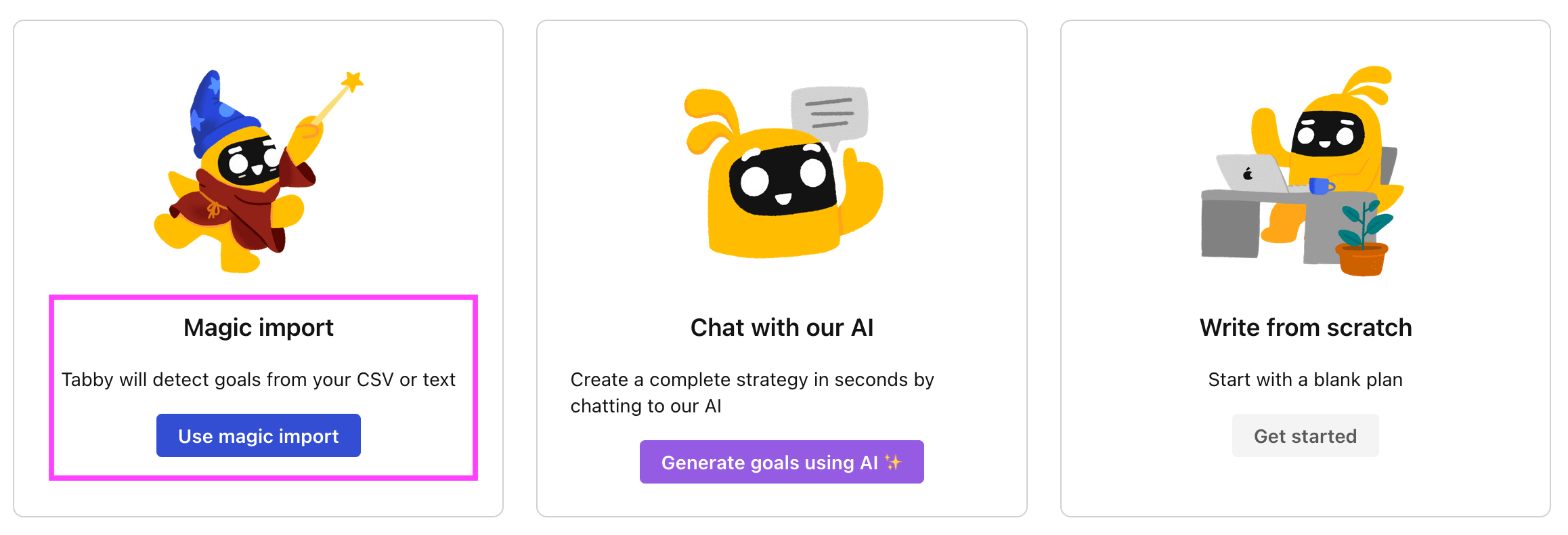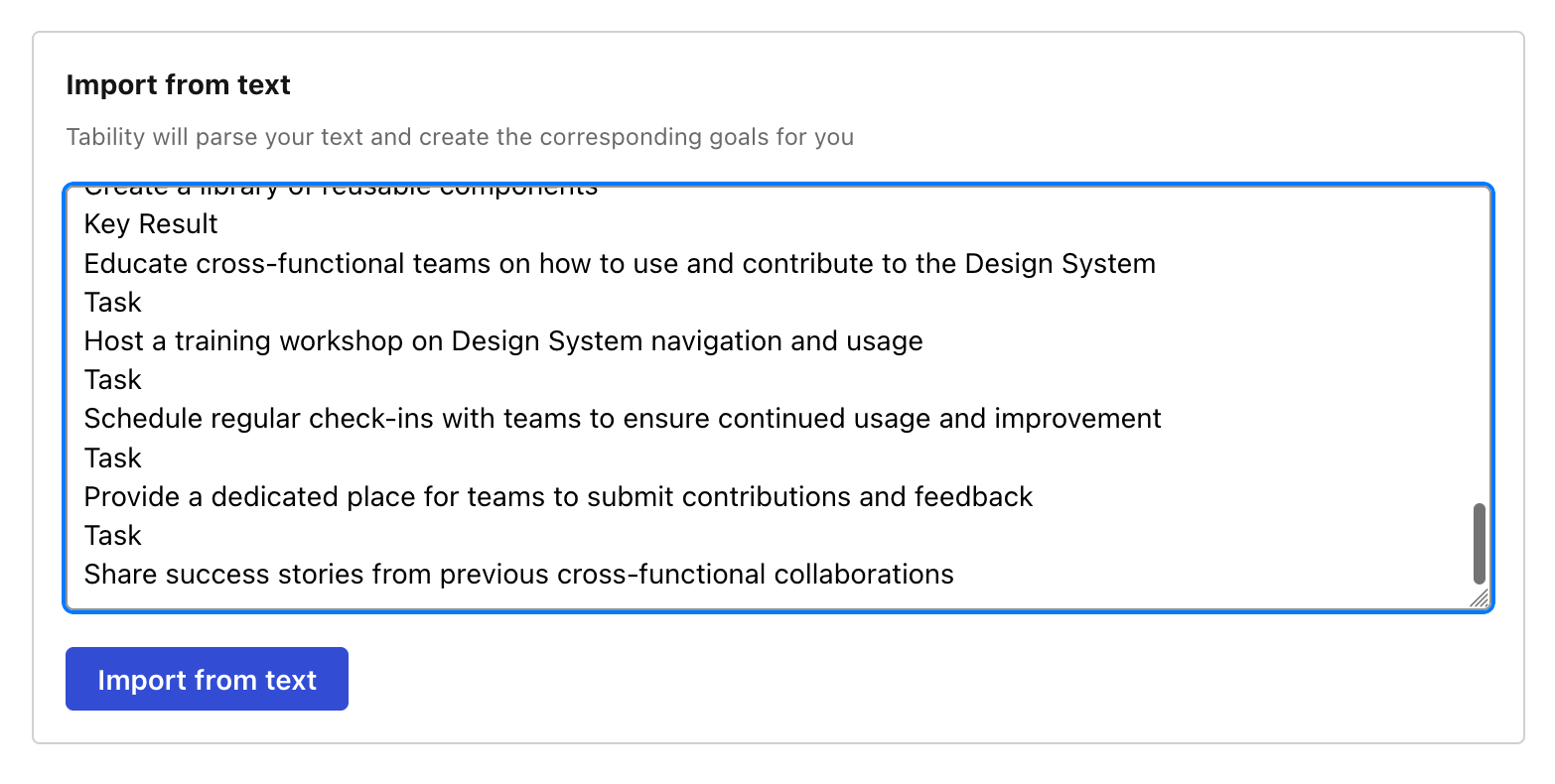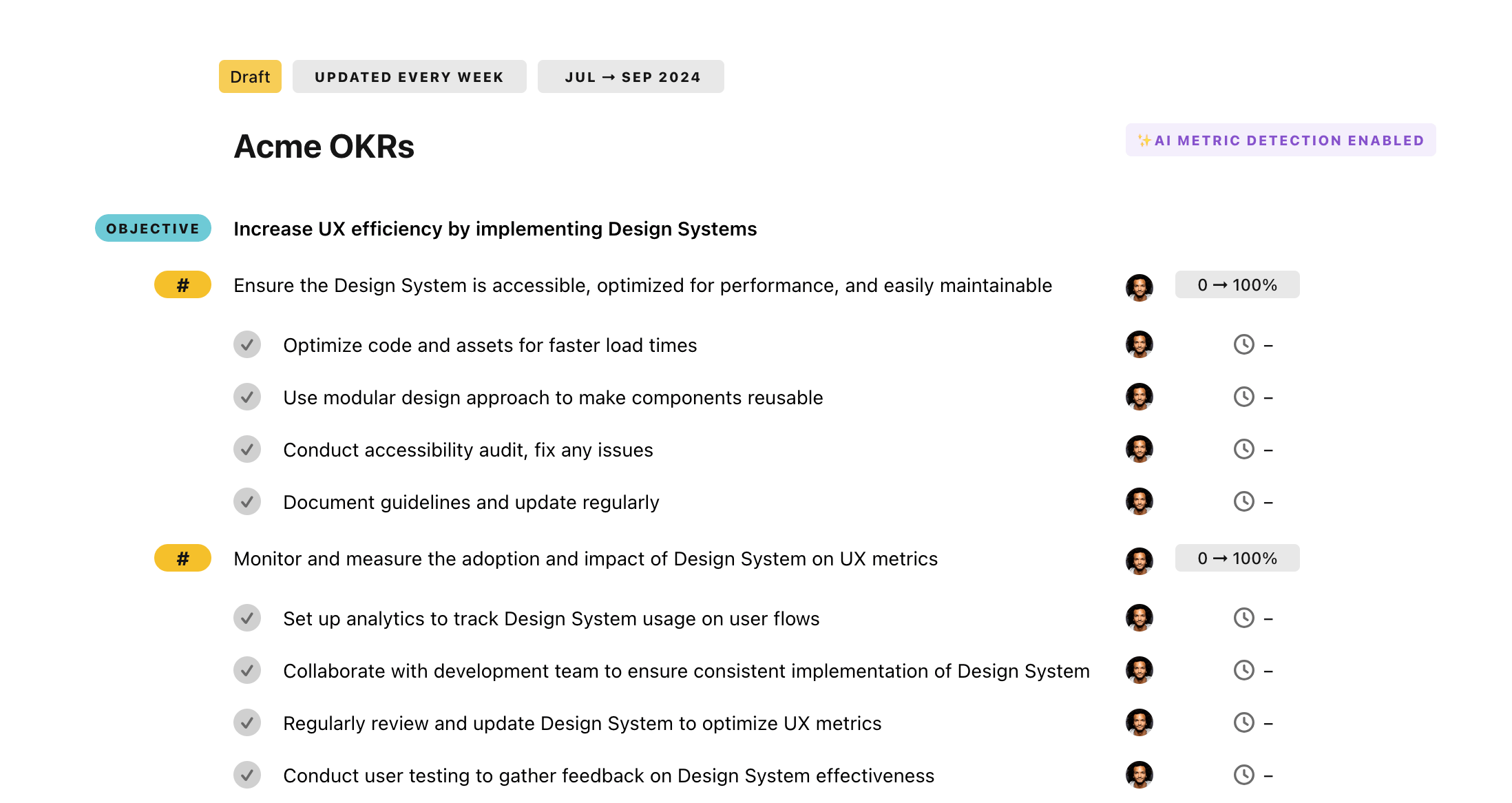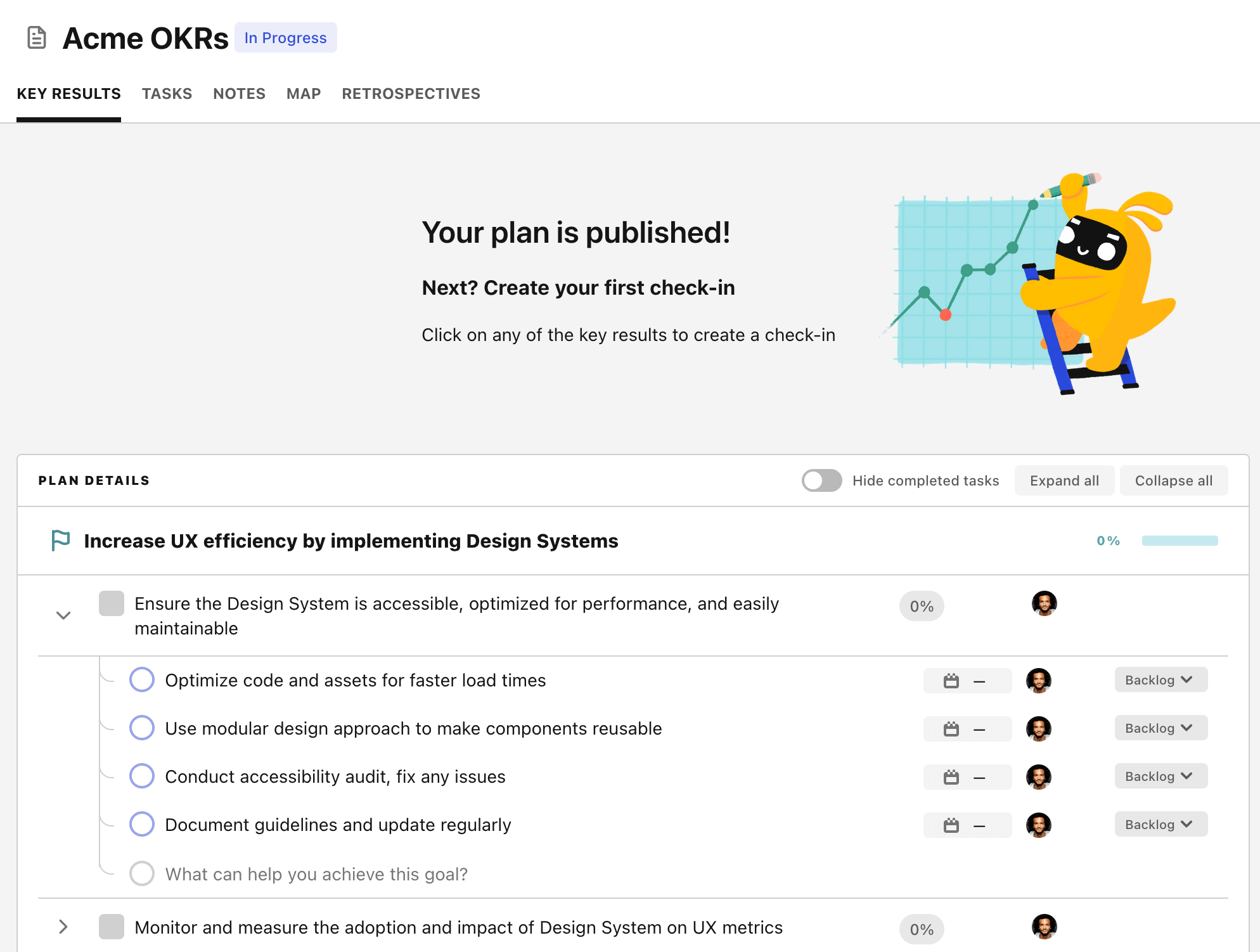OKR template to maximize data-driven decision making in Customer Support
Your OKR template
The second goal targets a 20% decrease in customer complaints by continuous process improvements. This reduction can be accomplished by recognizing recurring issues in customer complaints, enhancing service quality through immersive training programs and regularly updating customer service processes for maximum efficiency.
Speed is of the essence in providing excellent customer service. The third target is an ambitious increase in customer query resolution speed by 30% using data analysis. The agenda includes the introduction of advanced AI tools for quicker data interpretation and response, staff training on effective utilization of data analysis results, and examination of prominent query themes based on previous records.
This agenda is multifaceted, combining AI environment enhancement, customer complaint reduction, and query resolution swiftness – each step pivots on data analysis. The end goal? Maximizing data-driven decision making in Customer Support.
ObjectiveMaximize data-driven decision making in Customer Support
KRImplement 3 new AI-based automations to streamline support systems
Conduct tests and implement AI automations
Develop AI-based automation plans for those areas
Identify areas in support systems needing AI automation improvements
KRReduce customer complaints by 20% through continuous process improvements
Identify common issues from existing customer complaints
Implement training programs to boost service quality
Regularly review and update customer service processes
KRIncrease customer query resolution speed by 30% using data analysis
Implement AI tools for faster data interpretation and response
Train staff on utilizing data analysis results effectively
Analyze previous data to identify common query themes
How to edit and track OKRs with Tability
You'll probably want to edit the examples in this post, and Tability is the perfect tool for it.
Tability is an AI-powered platform that helps teams set better goals, monitor execution, and get help to achieve their objectives faster.
With Tability you can:
- Use AI to draft a complete set of OKRs in seconds
- Connect your OKRs and team goals to your project
- Automate reporting with integrations and built-in dashboard
Instead of having to copy the content of the OKR examples in a doc or spreadsheet, you can use Tability’s magic importer to start using any of the examples in this page.
The import process can be done in seconds, allowing you to edit OKRs directly in a platform that knows how to manage and track goals.
Step 1. Sign up for a free Tability account
Go tohttps://tability.app/signup and create your account (it's free!)
Step 2. Create a plan
Follow the steps after your onboarding to create your first plan, you should get to a page that looks like the picture below.

Step 3. Use the magic importer
Click on Use magic import to open up the Magic Import modal.
Now, go back to the OKR examples, and click on Copy on the example that you’d like to use.

Paste the content in the text import section. Don’t worry about the formatting, Tability’s AI will be able to parse it!

Now, just click on Import from text and let the magic happen.

Once your example is in the plan editor, you will be able to:
- Edit the objectives, key results, and tasks
- Click on the target 0 → 100% to set better target
- Use the tips and the AI to refine your goals
Step 4. Publish your plan
Once you’re done editing, you can publish your plan to switch to the goal-tracking mode.

From there you will have access to all the features that will help you and your team save hours with OKR reporting.
- 10+ built-in dashboards to visualise progress on your goals
- Weekly reminders, data connectors, and smart notifications
- 9 views to map OKRs to strategic projects
- Strategy map to align teams at scale